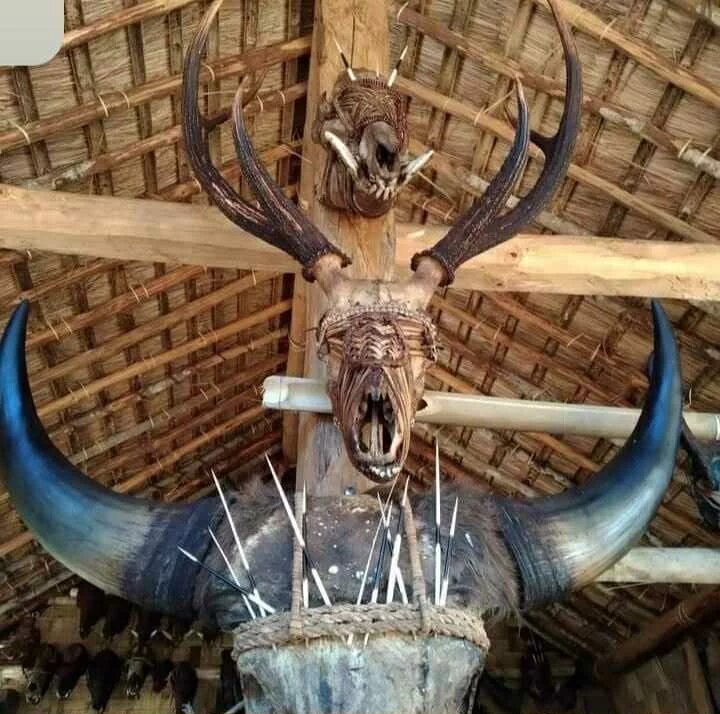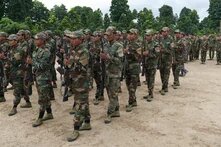
Masculinity among the ethnic communities of Myanmar should not just be seen as biological or as a result of gender inequality. It is deeply rooted in a cultural and social framework that has shaped daily life for generations.

Ethnic communities in Myanmar like the Chin, Kachin, Karen, and Naga reflect the pre-colonial origins of a specific social structure: these groups, located far from the central Burmese kingdom or the Shan principalities, avoided invasion or domination by the larger powers. As a result, they developed a concept of manhood as a social identity that emphasized personal qualities of self-discipline and physical strength, community responsibility for village protection, and political resistance to external authorities through self-governance.
These men often stood at the forefront of resistance and thus protected their families from external forces. In practical terms, these traditional practices of masculinity ensured the safety of harvests and shielded both families and crops from dangerous wildlife like tigers, bears, and elephants in the jungle. American Political Anthropologist James Scott has argued that these people reside in a mountainous area he calls “Zomia” and have for centuries denied any connection to the Burmese empire and the modern state. They practice shifting cultivation, grow rice and maize, and their mobility is a skill passed down generation by generation. Therefore, their sense of duty to kin, to the village leader, and their expressions of masculinity are essential for survival and maintaining their community.
How Masculinity is Practiced in Chin Society
Legends and myths portray Chin men as central figures in the cosmos.
As an anthropologist studying the Chin ethnic group in Myanmar, I focus on the structure of manhood and its production through ethnography, seeking to understand the meaning of masculinity in shaping a culture. The Chin region is situated in northwestern Myanmar, connected to the Himalayan Mountain range. Interestingly, the masculinity of the Chin people is influenced by the mountains, the soil, and different myths. Legends and myths portray Chin men as central figures in the cosmos, who sustain the community, protect it from danger, and uphold societal obligations. The term “real man” signifies responsibilities that go beyond the home to include the community as a whole. Early experiences like farming, hunting, or going to war serve as a collective habit of passage into manhood. Additionally, patrilineal lines establish men as heads of households and councils, while communal authority reinforces traditional social roles.
As Chin people live in the mountains and practice shifting cultivation, their food mainly comes from the forest and mountains. Young Chin individuals must participate in cutting down trees for farming and hunting food for their families alongside their fathers or relatives, while women are not allowed to do so. Women are allowed to handle domestic tasks, cotton making, and clothing production. The roles of women and men are naturally divided based on their local customs and traditions’ requirements. Women are not allowed to hunt, as hunting is very dangerous in the jungle. It appears that women are kept out of danger and are assigned to work at home according to traditional practices. Young men are forced to engage in hunting, which involves danger and hardship, such as climbing rocky mountains. This provides an opportunity to develop male strength as a form of masculinity. It also offers a sense of training in food provision and family protection from enemies or dangerous wildlife. Indeed, every household has a traditional man-made gun to go hunting. These roles hold significant meaning in Chin traditional villages, and myths often describe fathers or sons as having a strong sense of responsibility for their families.
Significantly, a self-made gun represents personal masculinity in rural society. Therefore, every family possesses a self-made gun in their household. It is a custom for younger males to accompany older males to learn how to hunt and survive in the jungle. This training teaches males the basic things about the forest, mountain spirits, and the associated rituals of the region, and women are entirely prohibited from hunting and are required to stay at home. This is a socialization task for males to prepare them to behave as men in the family.
Numerous skulls hung outside their houses signifies pride in their male strength.
For instance, when outsiders visit Chin village in northwestern Myanmar, they will see many skulls hanging in the houses. This displays the male power within the household. Seeing numerous skulls hung outside their houses signifies pride in their male strength, showcasing how many wild animals this household has killed. Besides, it represents the power dynamics of the village. For example, an elephant skull indicates that the household is strong in hunting and influential in the community. Visiting a house, you can observe different types of skulls and learn about their hunting stories, which reflect their masculinity. These people often challenge their generation to hunt the most dangerous wildlife. This pride highlights their hunting skills and signifies their family’s power in the village. Overall, these structures shape masculinity as a reflection of power and male identity in the Chin community.
Chin Manhood Is Now Challenged by a New Generation
However, when American Baptist missionaries arrived in the late nineteenth and early twentieth centuries, they reframed Chin traditional idea about what it means to be a man. Christian teaching reproduced a moral code and visions of patriarchal leadership, demanding a new order of masculinity. This meant a duty to cultivate prayer, church attendance, and ethical integrity. Christianity simultaneously located masculine honor in spiritual authority, moral self-discipline, and stewardship of the home. Patriarchy, however, was not dismantled. It was re-instituted within new church and community structures that affirmed male supremacy in explicitly Christian terms.
Today, knowledge about Chin manhood remains dynamic, challenged by new experiences of a new generation, diaspora, and emergent ideas of gender. Particularly among educated, younger Chin, ideas of women’s empowerment and feminist theory are slowly gaining ground. Diasporic and local youth alike call for masculinities that are less hierarchical, exercising agency through creative activism and social media. Meanwhile, Church pastors and Indigenous theologians offer revised versions of masculinity, not blessed through authority and control, but through Christian practices of humility, empathy, and collective obligation. In conclusion, masculinity among the Chin and Myanmar's other ethnic groups is not fixed or universal and is not controlled by one authority. It changes based on time, memory, power, and culture. It is a way of living that provides for taking control, celebrating masculine achievements during hardship, and understanding the meanings in everyday life.

